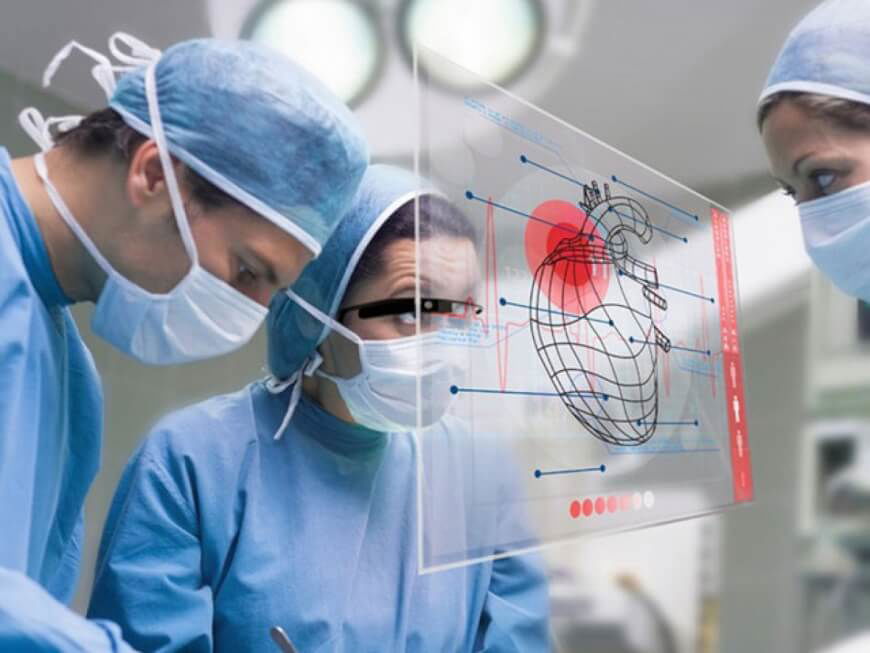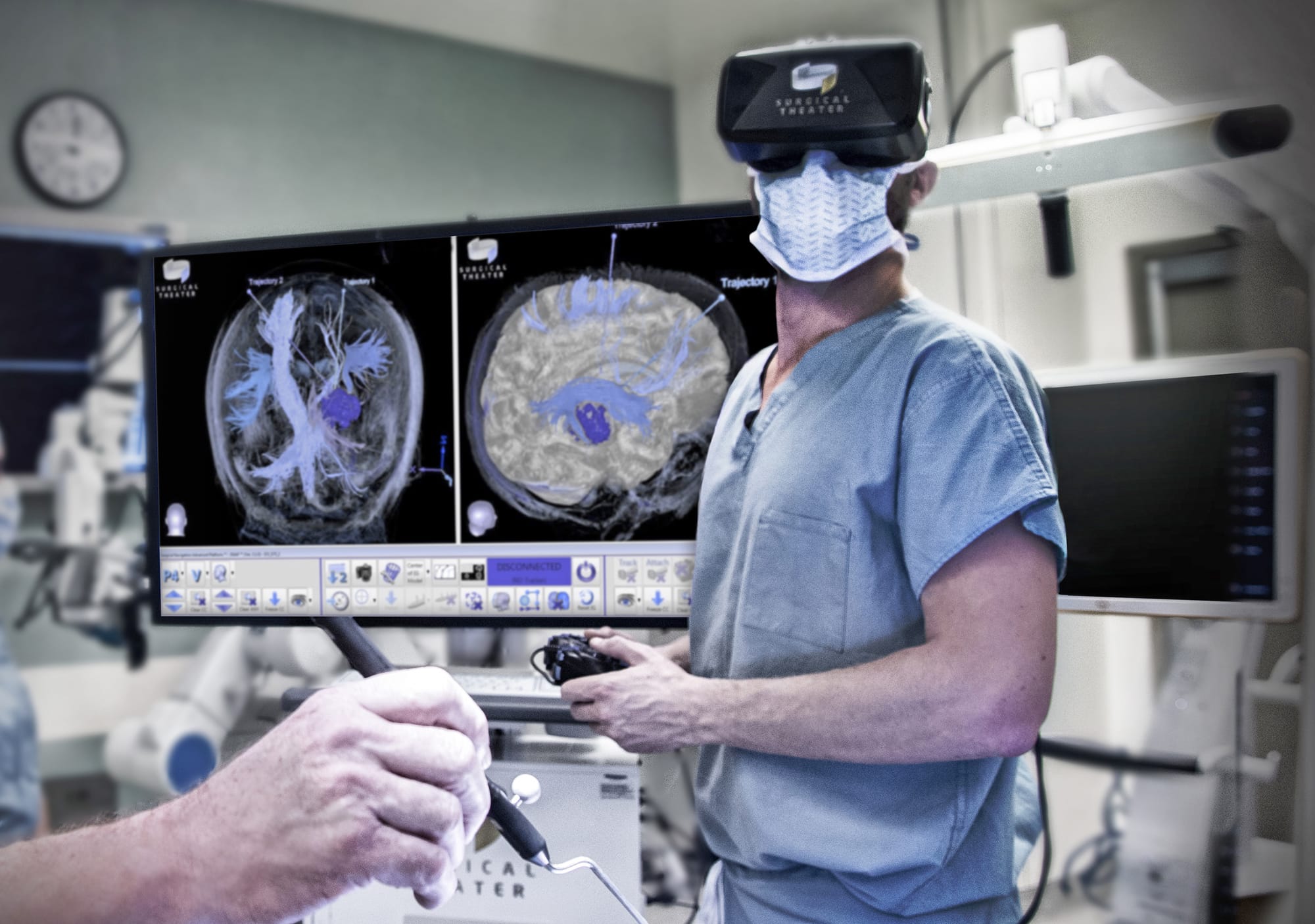
Disruptive technology is in high demand in the healthcare industry. A growing number of elderly people to care for, combined with the rapid spread of new diseases, has put healthcare professionals under a great deal of stress in today's world. We need new, skilled professionals as soon as possible to continue protecting patients.
According to UConn Health, a company dedicated to helping people live healthier lives, virtual reality could be the answer to several healthcare training issues.
To meet the growing demand for skilled medical professionals in the new world, UConn Health partnered with Oculus for Business, Meta's leading VR hardware solution. Here's what happened when the two companies teamed up.
If you have ever hospitalized or visited by anyone in the hospital, then you probably know that patients can feel anxiety, uncertainty and warmth that begin because of a radical change in living environment and loss of acceptable rights. Sitting in the hospital room for days, weeks or even hours, often in pain and distress, physically demanding hours, emotionally draining, social isolation and the hospital room can be more like a sick prison cell than an uplifting, healing environment.

To develop the applications of virtual reality in medicine.
Virtual reality (VR) is the name given to the technology that allows a user to simulate a situation or experience of interest. It is a system that uses a VR headset and interactive environment to simulate the experience of interest, using a VR system. The simulation is immersive and affects the user by the use of special 3D goggles with a screen, or gloves that provide sensory feedback, to help the user learn from experience in this virtual world.
The VR-medicine company uses virtual reality to experience the world.
Using virtual reality used in many areas of healthcare, while there are many applications for this technology. These trainings include everything regarding the medical field, such as for doctors just starting, teaching patients how naturally heal, marketing to potential new customers, and educating the public on diseases and medical conditions. We expect VR investments to reach $4 billion by 2020, which encompasses video glasses, services like VR arcades, and so forth.
VR Training in medicine.
Currently, medical training is shifting from being an isolation of facts to learning to apply those facts using reasoning and reasoning to arrive at the management strategy when faced with a patient. This training comprises problem-oriented learning, communication skills, and virtual reality-based learning.
So VR can simulate even a medical situation that is not real, so the students can learn how to deal with it in actual life. Following this process, feedback and debriefing will allow them to learn from their mistakes and to improve their performance. That it is relatively cheap and that faculty not required to be present gives access (to these programs) to a much broader-based group.
It's useful to use VR to depict the interior of a body alongside allowing the visualization of areas otherwise not visible, such as the intestinal tract. One factor is that the dissection of cadavers from a new medical student's early education has abandoned and replaced with the 'virtual' dissection of the body using a VR.
Computer graphics have made it possible to completely recreate and simulate any part of the body in great detail and with great fidelity to reality. We can offer trainings using concrete scenarios that closely resemble real-world surgical situations.
For instance, a surgeon might practice a real-life surgical procedure by filming it from several angles with stunning quality, and then combining this footage realistic model of the body site being operated on—allowing the student to ‘operate' in VR.
Understanding the processes that take place when a bone fractured is extremely import to orthopedic surgeons as they undergo their surgical training. Because minimally invasive surgery is of significant benefit in reducing operative costs, besides reducing the complications and the recovery time, simulation-oriented VR-based training is a very effective means that allows this to transferred to novice surgeons.
This type of training starts off effective in imparting standardized instruction in invasive monitoring and mechanical ventilation, though it might not help in treating the patient in reality. (Here, the "or" they include warrant, as it is an alternative paraphrase of the example sentence)
It is the same in the operating room when sutures used: surgeons need very specific memory for the delicate fine fingers with cutting (or more) of the hair, or the skin needs to cut tiny so as not to get hurt, so it works similarly in the orthopedic surgeries, where the use of virtual reality with tactile and sensory feedback found to be safe and reproducible, and inexpensive, compared to conventional training.
The participant number may offset the high cost of VR environments, including the cost of monitors, programming, and the other tools required for such training, having a greater number of students in each program. Indeed, more accurate knowledge has attained via VR, as the results clearly show this to be a superior method.
Management of the patients in VR.
Virtual reality is extremely useful in preparing for a complex operation beforehand, such as a neurosurgical procedure. The surgical team can treat a relevant model together, at a location remote, rehearse the operation, evaluate and practice the proper steps, organization, and action execution.
This makes for a very safe area and minimizes surprises. E-cigarette use portrayed by observing CT scans, MRI scans and ultrasounds of patients. Data compiled and considered and matched in VR. On the reconstruction machine, the patient looks and feels like himself/herself up in the surgical equipment.
Virtual Reality applications are also crucial in surgical robotics, which depends on a robotic arm controlled remotely by a human surgeon at a console. Since they position the camera within the body, the surgeon depends on this camera to provide a view of the area being operated on. However, the lack of tactile and sensory feedback during surgery may compensate for by including VR, which provides fair tactile and sensory feedback.
People with phobias, such as arachnophobia, also find virtual reality very helpful and have their therapists doing it with them. For instance, if a client's fear of heights cured, they may recreate a corresponding situation in therapy, where the client is gradually and little by little put in the situation in order to face it. It is also the case with PTSD, in which post-traumatic stress disorder is the result (PTSD).
And an enormous benefit with virtual reality is that you already practice your reality skills at home, without the distraction of actually going to the target area, while also building confidence as you build your ability to face the actual situation.
I do this at the same time as the therapy is being provided, which is much more convenient, and much more private than doing it at a therapy center. It is also another chance to repeat the test after a sufficient amount of time.
VR Pain management is always necessary.
Virtual reality also found to be useful in the work of relieving pain and rehabilitation of patients with severe pain, such as those who are recovering after having received a skin graft, during the daily cleaning of burn wounds, or to make daily injections more bearable for children.
Immersive VR has found effectively distract and thus relieve the pain of patients that are in acute pain related to the condition causing their pain, or related to the surgery to rule out such conditions.
Video-recording technology and medicine are becoming increasingly intertwined.
Physical therapy and rehabilitation are very useful.
In the physical therapy field, virtual reality allows for the shortening of the recovery process by making it easier for patients to do their exercises. Through putting the patient into a virtual platform, the VR allows them not only to escape from their pain but also to foster a dying wish, motivating and encouraging the patient to complete the activity.
While this type of injury may be very common among patients who are recovering from a stroke, they may also practice specific movements without the risk of further injuring themselves by a fall. By being supplied with these resources, patients will have the confidence to perform everyday activities in the real-life setting.
Health hazard.
These therapies can also help treat addictions. For example, after radical surgery, the patient placed in a virtual environment to help them recover from the sense of having cheated or left behind by society or the world. Using your own environment, with your friends and family, in a simulated situation before being exposed to the real thing may ease the anxiety or panic feelings.

Education about health.
Similarly, when patients and physicians need to understand their medical condition, virtual reality comes to the rescue by providing an understandable and detailed reconstruction of the organs and tissues of interest. The patient can grasp the principles of the treatment, which increases his or her satisfaction with the intervention.
The actual effects of certain lifestyle practices and noxious substances on a body may also better communicated through AR with the growth of certain tumors, obesity, and related metabolic dysfunctions. The impact of smoking, drinking on lung and liver function, respectively, can also be conveyed through V Relative to a VR.
Being fit
We have used virtual reality in many fitness apps to get people up off their sofas and off their screens for an hour of physical activity. Physical activity that is hooked up to a game, very similar to games of other properties, will encourage physical activity. This could include goals and rewards, feedback on activities, or just a virtual reality experience.
Using Virtual Reality in Orthopaedic Education
According to Dr. Danny Goel, the founder of Precision OS, the purpose of the company is to make teaching and learning through virtual reality realistic and valuable, in a low-risk and safe environment.
This means the company is pushing the boundaries of simulation during the operational experience in virtual reality. The Oculus Quest headset was essential to helping Precision OS achieve its lofty goals.
Where other headsets have complicated and expensive in the past, the Quest offers a highly mobile and effective experience, with six degrees of freedom, and amazing visuals.
In a study conducted by the Precision OS and CSES group, senior surgical doctors who trained with VR technology learned up to 570% faster than those using traditional learning methods.
Dr. Mazzocca of the UConn Health group, like many professionals, was originally sceptical of VR from the moment he put on the Oculus Quest Headset.
He noted his body adjusted quickly to the experience, and he could feel as though he was really working in and walking through a new environment. Mazzocca also commended the high-quality visuals of the PrecisionOS system, and how the software mimicked the real-world perfectly.
Marketing
Medicine has become a huge part of today's marketing. Virtual reality makes it possible for doctors to share their knowledge with patients, and for patients to communicate their experience without words to their doctors, allowing for powerful and effective communication, enhanced awareness of the disease, and potential interventions.
It is still too early for either virtual reality or robotics to have a very broad use. Today, Virtual Reality is used to enhance the safety and efficacy of surgical procedures through the use of a doctor's visualization. In the future, Virtual Reality, or Virtual Reality, will enhance the safety and efficacy of surgical procedures, especially those that are minimally invasive or non-invasive, and to better understand the intricacies of the human body.
There are little to no large-scale trials showing its benefits, while it is possible that it may disorient and addictive. Also, despite the poor-quality VR tools that may purchased, the learning may be inferior and possibly dangerous for the patient.

You should also check out the following articles:
- VR BUYING GUIDE AND THE BEST VR HEADSET FOR 2022
- A meta market opportunity: The metaverse could soon be worth $1 trillion
- Facebook wants to build a metaverse. Microsoft is creating something even more ambitious.
- How to succeed in the virtual reality world of tomorrow?
- Books you must read about virtual reality
- Best New Augmented Reality Books To Read In 2021
- US$ 4.7 Billion- The global augmented reality gaming market
- The smart glasses revolution is about to get real
- Consumer Brands Reinventing Marketing in the Metaverse
- Imagine Making Money in Rec Room
- The biggest AR and VR predictions of 2022
- Apple hired Meta's AR communications lead ahead of the 2022 launch of the headset.
- Who Will Be in Charge of the Metaverse?
- The Kingdom of Abraham: The first Jewish metaverse
- Gen Z are planning to spend thousands on cryptocurrency, NFTs and metaverse
- According to Goldman Sachs, the metaverse must run on blockchain
- What You Can Create With a Small Piece of Land in the Metaverse
- How To Buy Land In The Metaverse ?
Subscribe now to our YouTube channel
Subscribe now to our Facebook Page
Subscribe now to our twitter page
Subscribe now to our Instagram
Subscribe To my personal page on LinkedIn
Subscribe To my personal page on TikTok page for those who love to dance :)
Want to know what else is going to be in the coming years? Follow me. Follow the future. Sign up for my friend's letter.


